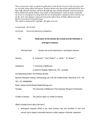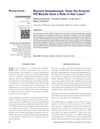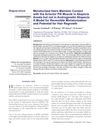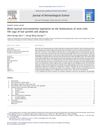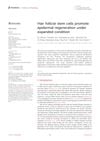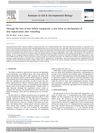Faculty Opinions Recommendation of Mechanical Stretch Induces Hair Regeneration Through the Alternative Activation of Macrophages
October 2020
in “
Faculty Opinions – Post-Publication Peer Review of the Biomedical Literature
”
TLDR Mechanical stretching can promote hair growth by activating certain immune cells.
The study by Chu et al. explored the role of mechanical stretch in hair regeneration using a mouse model. They found that controlled skin stretching induced the transition of hair follicles from the telogen to anagen phase, promoting hair growth. This process was mediated by the upregulation of growth factors and chemokines, which attracted monocytes/macrophages and promoted their differentiation into "M2-like" macrophages. These macrophages were crucial for hair regeneration, as their depletion suppressed hair growth, while their transplantation enhanced it. The study suggested that mechanical forces could be a novel strategy for promoting hair regeneration in humans, highlighting the need for further research to optimize mechanical cues for tissue regeneration.

